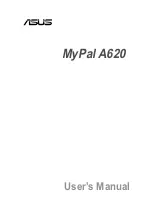
Operation
Mobile Computer
MC 92N0
ex
Type 17-A1A.-………… and Type B7-A2A.-…………
52/78
Technical data subject to change without notice..
Revision B / 03/2019
Vehicle installation
RF signals may impair incorrectly installed or inadequately shielded electronic systems in
vehicles (including safety systems). If you have any questions on your vehicle, get in touch
with the manufacturer or a sales person. You can also learn from the manufacturer whether
additional equipment has been fitted to the vehicle. An airbag has a strong impact. Do NOT
place objects, such as installed or portable radio equipment, in the area above the airbag
or in the area of deployment of the airbag. If the radio equipment was not correctly installed
in the vehicle, severe injuries may result if the airbag is triggered. Position the device within
good range. Ensure that you have access to the device without having to take your eye off
the road.
It is not permitted to connect a warning device which leads to horn sounds or light signals
when receiving a call in road traffic.
Road traffic safety
Do not take any notes and do not use the device when driving. Making a list of to-do’s or
browsing through the address book when driving has a negative influence on safe driving.
When driving on the roads, you must primarily think of your safety and that of the other road
users. You should therefore concentrate completely on the road. Check the legal provisions
on the use of wireless devices in road traffic of the respective region. Always observe these.
If you use a wireless device during driving, rely on your good judgment and remember the
following:
1.
Become acquainted with the wireless device and its functions such as the shortcut
dialing or dial repetition. These functions may prove to be useful if you would like to
make a call without taking your eye off the road.
2.
Where possible, use hands-free equipment.
3.
Let your dialogue partner know that you are behind the steering wheel. Where
necessary, discontinue the call in dense traffic or poor weather conditions. Rain, sleet,
snow, ice and even very dense traffic represent dangers.
4.
Dial the required numbers carefully and estimate the traffic situation. Make your calls
when you have brought your car to a stop or before you leave. Plan your calls such
that they can be made when the car is parked. If you really must make a call during
the trip, only dial a part of the number, check the road and look in the rear view mirror
and then dial the rest of the number.
5.
Do not surccumb to stressful and emotional telephone conversations which could take
your attention from the road. Let your dialogue partner know that you are in a car and
refrain from conversations which could take your attention away from the road.















































